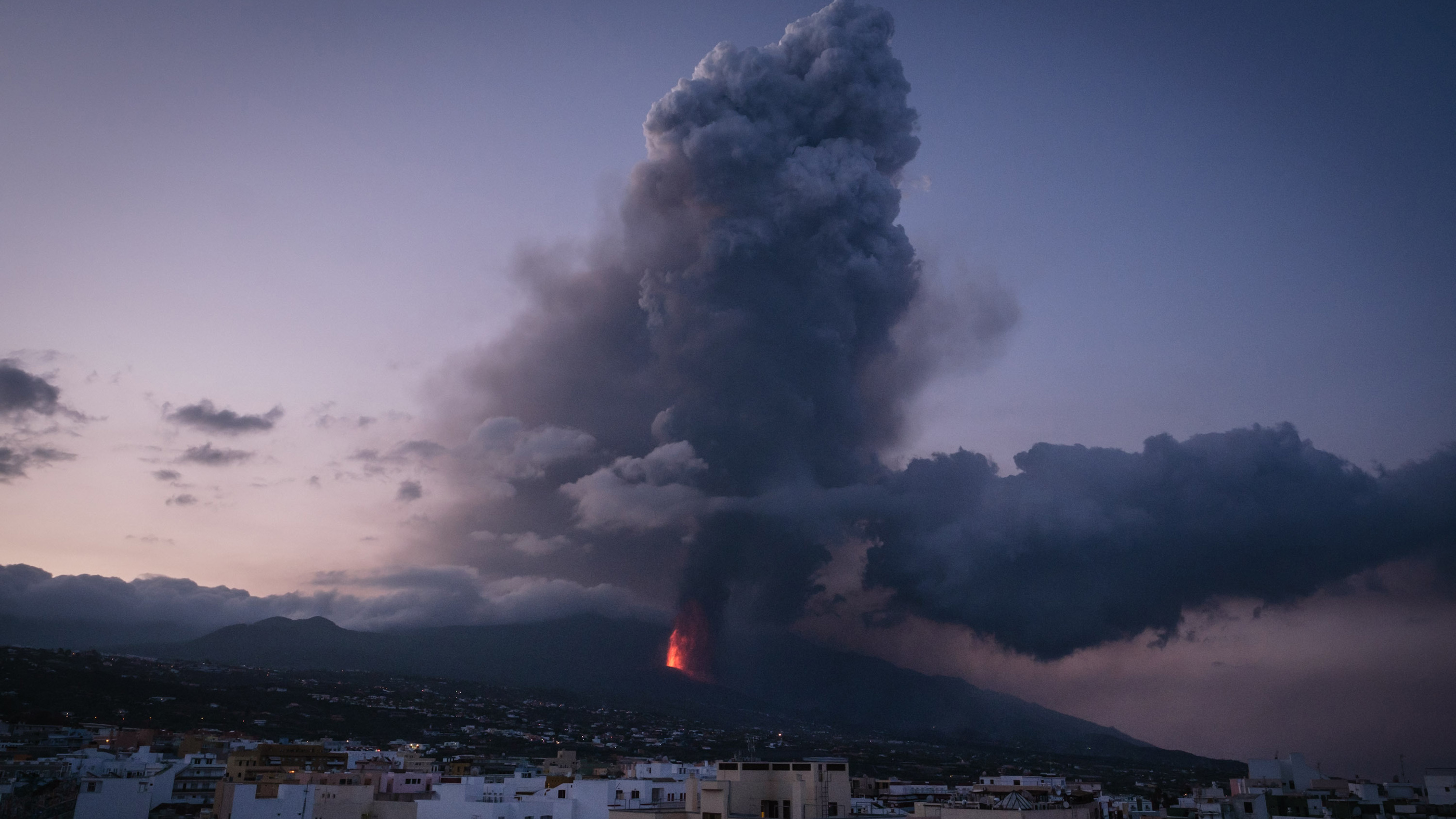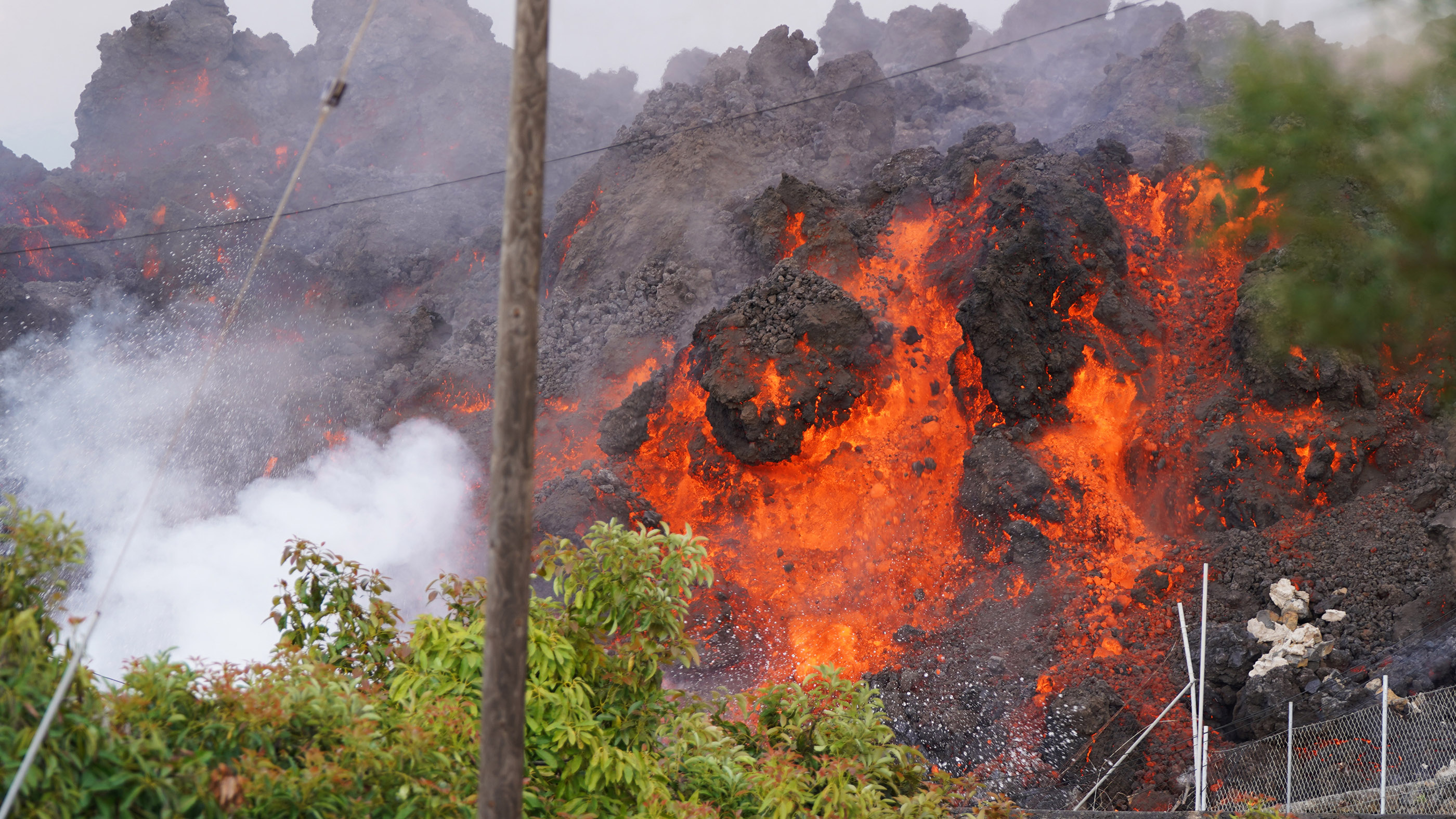Canary islanders threatened by toxic gases from lava pouring into the sea
Volcanic eruption on La Palma is choking the air with toxic gases.
More than a week after its volcano erupted in a spectacular display of molten lava, islanders on La Palma are threatened by a new hazard — the toxic gases and particles created as the volcanic flow spills into the sea.
Officials have told residents on the Spanish island — one of the Canary Islands about 60 miles (100 kilometers) off the coast of West Africa — to seal their doors and windows with tape and wet towels to keep out the potentially dangerous clouds, which can occur when molten lava pours into the ocean.
The lava is essentially molten rock and is estimated to be about 2,200 degrees Fahrenheit (1,200 degrees Celsius); when it is suddenly cooled by seawater it creates dense clouds of "laze" — a combination of lava and haze — that contains dangerous amounts of hydrochloric acid, volcanologist Robin George Andrews told the BBC "Obviously, it's not good to breathe in."
Related: Big blasts: History's 10 most destructive volcanoes
When the extremely hot lava hits the seawater, the heat causes the water molecules to split into hydrogen and oxygen ions; the hydrogen then combines with chloride ions dissolved in the seawater to form hydrochloric acid. The vapor from this acid is dangerous to inhale. The resulting clouds of laze also contain fragments of volcanic glass and particles of volcanic ash that are small enough to stay airborne and get into a person's lungs.
Although no one has yet been injured by laze from the latest eruption on La Palma, it can be fatal — according to the U.S. Geological Survey (USGS), two people were killed in Hawaii in 2000 after they inhaled the acidic steam.
In addition to the danger of asphyxiation, clouds of laze can irritate skin, eyes and the respiratory tract; and the hot lava mixing with the relatively cold seawater can also cause dangerous explosions, the USGS reported.
Get the world’s most fascinating discoveries delivered straight to your inbox.
Volcanic islands
According to geologist José Mangas Viñuela at the University of Las Palmas of Gran Canaria — a city on another of the Canary Islands — the islands started forming in the Atlantic Ocean more than 150 million years ago, possibly above a volcanic “plume” or “hotspot” in the Earth’s mantle below the ocean, but also possibly above another type of mantle anomaly, a fracture between tectonic plates, or other causes, Viñuela said in research published on the scientific website MantlePlumes.org.
Over time, older islands like Tenerife and Gran Canaria have drifted roughly east of the mantle feature that causes the volcanism and are therefore less volcanic today. But La Palma, in the north-west of the group, is now the most volcanic.
Eight eruptions of volcanic craters on La Palma's main mountain range and volcano — the Cumbre Vieja, meaning "Old Peak" — have occurred since records began in the 15th century.
The last eruption before this one happened in 1971, and killed a fisherman who was asphyxiated by fumes — possibly laze — when he got too close to a stream of lava.
The latest eruption began on Sept. 19 when a crater on Cumbre Vieja belched molten lava; the lava started to flow downhill in streams up to 2,000 feet (600 meters) wide and reached the ocean on Tuesday (Sept. 28).
A Spanish research ship is offshore and monitoring the lava flows from a safe distance.
Continuamos con nuestras labores de investigación a bordo del buque oceanográfico #RamonMargalef @IEOoceanografia @CSIC #LaPalmaeruption #lavaocean pic.twitter.com/keT1Tm5keASeptember 29, 2021
The BBC reported that three coastal villages had been locked down in anticipation of the lava making contact with the water, but otherwise the authorities on La Palma have downplayed the threat from toxic gases.
About 85,000 people now live on La Palma; about 6,000 have been evacuated from their homes to keep them safe during the latest eruption, which has covered more than 470 acres (190 hectares) of land with lava and destroyed more than 650 houses.
Originally published on Live Science.
Tom Metcalfe is a freelance journalist and regular Live Science contributor who is based in London in the United Kingdom. Tom writes mainly about science, space, archaeology, the Earth and the oceans. He has also written for the BBC, NBC News, National Geographic, Scientific American, Air & Space, and many others.




